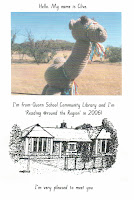Many school visits of late and treks around the suburbs and hills reminds me that our native wattle is such a great emblem. What varieties and what blazes of colour.
During my school sessions, I often began using an iddy-biddy poem of mine about wattle. Because it related to the current season, I thought it might help kids become more aware of their environment.
Also it was a fun, interactive way to begin.
The whole poem is:
Yellow breezes
bring the sneezes
all from fluffy, wattle, treeses.
I wrote all but the last three words on the board and left the kids curious, while I talked about yellow breezes. Can we see breezes? Can we see the wind? If not, what can we see? And why a colour breeze? At that point some worked out that wattle trees were somehow involved. I then spoke about choosing the right words for the job. How to tighten the line of a poem by connecting only two main words to create a word picture.
We then moved on to bring the sneezes; the meaning of which they worked out fairly easily. Then rhyme was mentioned.
The last part was interesting. We tapped or clapped the rhythm of the whole poem and I emphasised that we’d need words that were consistent with that pattern. What words could we use? What would be appropriate to the context of the poem? If they gave me a one syllable word, for example, fun, I wrote it up, and read the last line using that word, so the children could hear the difference in beat, before asking for another suggestion. I urged them also to consider the meaning of the poem.
Finally they completed the first two words, fluffy and wattle, but became stuck on the last word. I talked about playing with words and how you can make up words as long as the meaning is not too obscure. When someone offered treeses, there was a mixture of reactions. Some children latched on quickly, others not so fast. But lots of, ‘Ahh! I get it’ or ‘I was going to say that!’
I write both rhyming and non-rhyming poetry, but through this little poem I was able to talk about quite a number of aspects of writing; keeping it tight and simple, using spare, important adjectives, and breaking a rule or two - just for fun!





